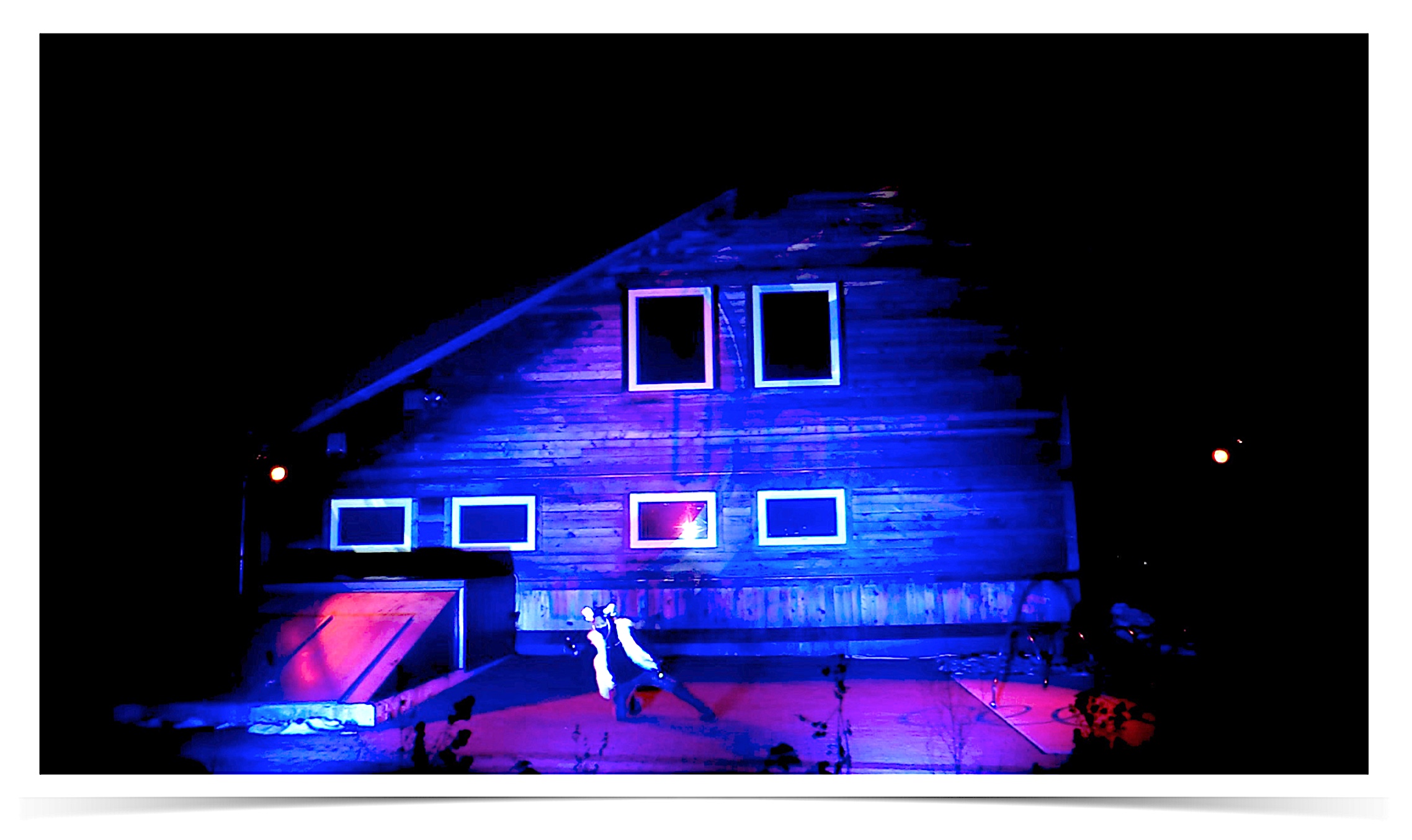Shifting Gears and Producing Face to Face During a Global Pandemic.
by Todd F. Edwards, St. Olaf College
Our traditional production model consists of 5 shows and a one act play festival over the course of an academic year. This season of plays is usually divided into two productions in the fall, one main stage production in the January term that is part of a course called Producing Theater, and two productions in the spring semester. The January production/course is something we are very proud of as it is the closest to a resident theater experience that our students get during their academic study. Our fall and spring semester shows include a production in each of our two theater spaces (studio and mainstage). We close the spring semester with the one act play festival.
Due to Covid 19 we were forced to end our face to face teaching and production schedule early last spring semester at the beginning of March. We were around 80% complete with preparations for our production of Mama Mia when we basically dropped tools and walked away. It was our hope that we would be able to return to campus after spring break and continue with the production. As we all know, that was the start of the major shutdowns and the coining of terms like “the new normal," “pivoting," and “zooming” to name a few. After several plans, innumerable meetings and the implementation of strict testing, quarantining, contact tracing, reduced class sizes, required mask wearing, social distancing and more hand sanitizer and disinfecting products than one should come into contact with in a lifetime, we were able to return to campus for a drastically modified fall semester beginning at the end of August. Still uncertain about how we would produce but committed to providing the best experience possible while maintaining the strictest of safety protocols, we settled on two outdoor, masked, and distanced productions. The first was a radically re-imagined remounting of Mama Mia outdoors in front of the Boe Chapel facility on campus .
All of the performers were quarantined and tested prior to returning to rehearsals, in mask for the rehearsal process and in clear face shields for the actual performance. Additionally we had boxes for each performer to store their costumes, individual props, and dedicated mics as well as strict sanitation/disinfection protocols in place. The audience size was drastically limited and distanced. While drastically different than the original concept for the piece, the show was a great success and we were able to come together as a community and produce face to face. (Click this Link to see more about that production)
Our second offering and the main focus of this article is our follow up production of a new work entitled Big Plastic/Something Lunar. This production was originally conceived as an immersive, devised work to be performed in a space on our campus known as the Art Barn. The Art Barn is an open concept space approximately 40’x40’ with around 1600sq ft. of area. https://wp.stolaf.edu/flatenartbarn/policies/
The Art Barn Interior
The original concept was for the audience to walk through the space experiencing the production. This would not be possible if we were to maintain the required Covid-19 safety protocols. One advantage we had was the piece had only been conceptualized and no actual writing of the script had taken place. The director wanted to devise the piece with the cast and designers input to shape the final work.
I met with the director (Bryan Schmidt) where he shared his revised concept for the piece and his new plan to encompass the surrounding natural lands- having the audience distanced and traveling through the area experiencing the story through vignettes as the text and the action unfolded around them. This allowed for a much broader interpretation and greater opportunity for the design to evolve while letting us have the safest experience for our cast, crew and audience. Knowing the uncertainty of the winter weather in Minnesota and the desire to have the final production on a full moon (a key concept to the theme of the piece and its title) we chose to perform over the last week in October. Holding true to 2020 being unpredictable we had unseasonably cold weather and early snow the week leading up to and including tech with temps only starting to warm up (slightly) for the performance dates.
The plot of the story allowed for an exploration of two worlds-Big Plastic, a large corporation with no concern for their impact on the environment of the fairy folk (Something Lunar) and the fantastical, supernatural world of their magical grove. My research came from many sources including outdoor music festivals and parks. I wanted to explore the idea of portals into the realm of the fairy folk with the random placement of doors around the space.
Some Research Images
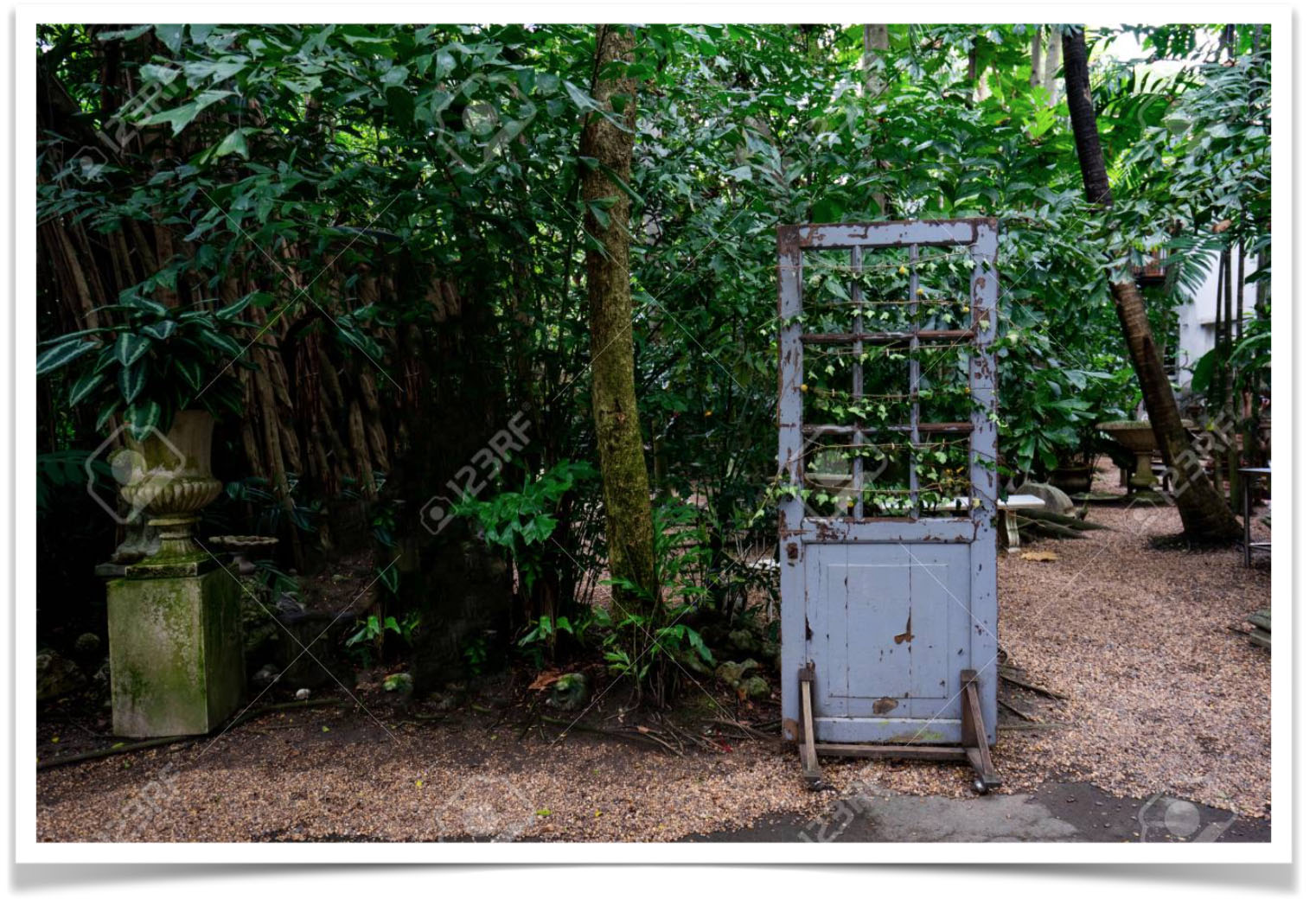
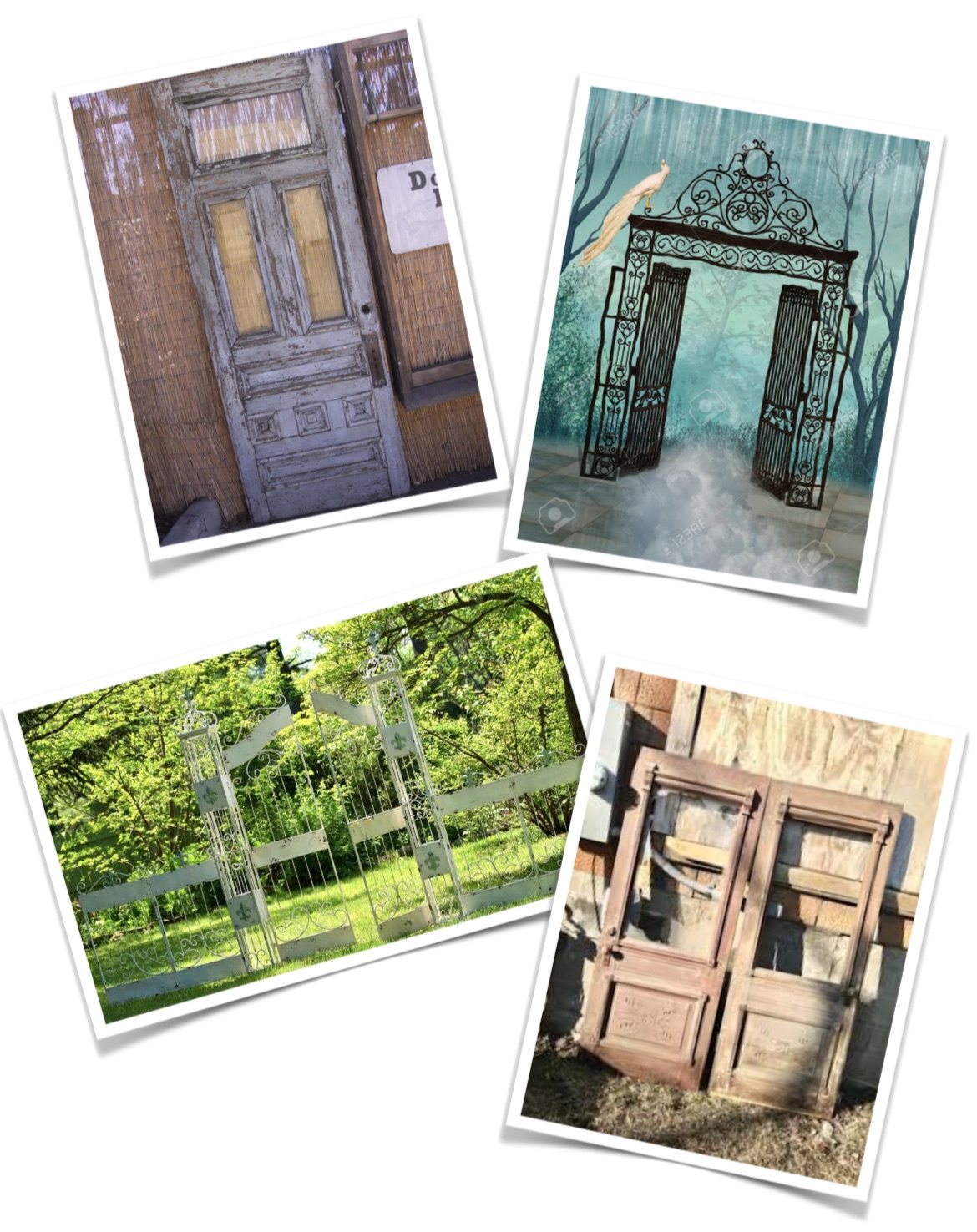
The research images below are from the August, 2020 issue of Lighting & Sound America from the article Garden of Night…
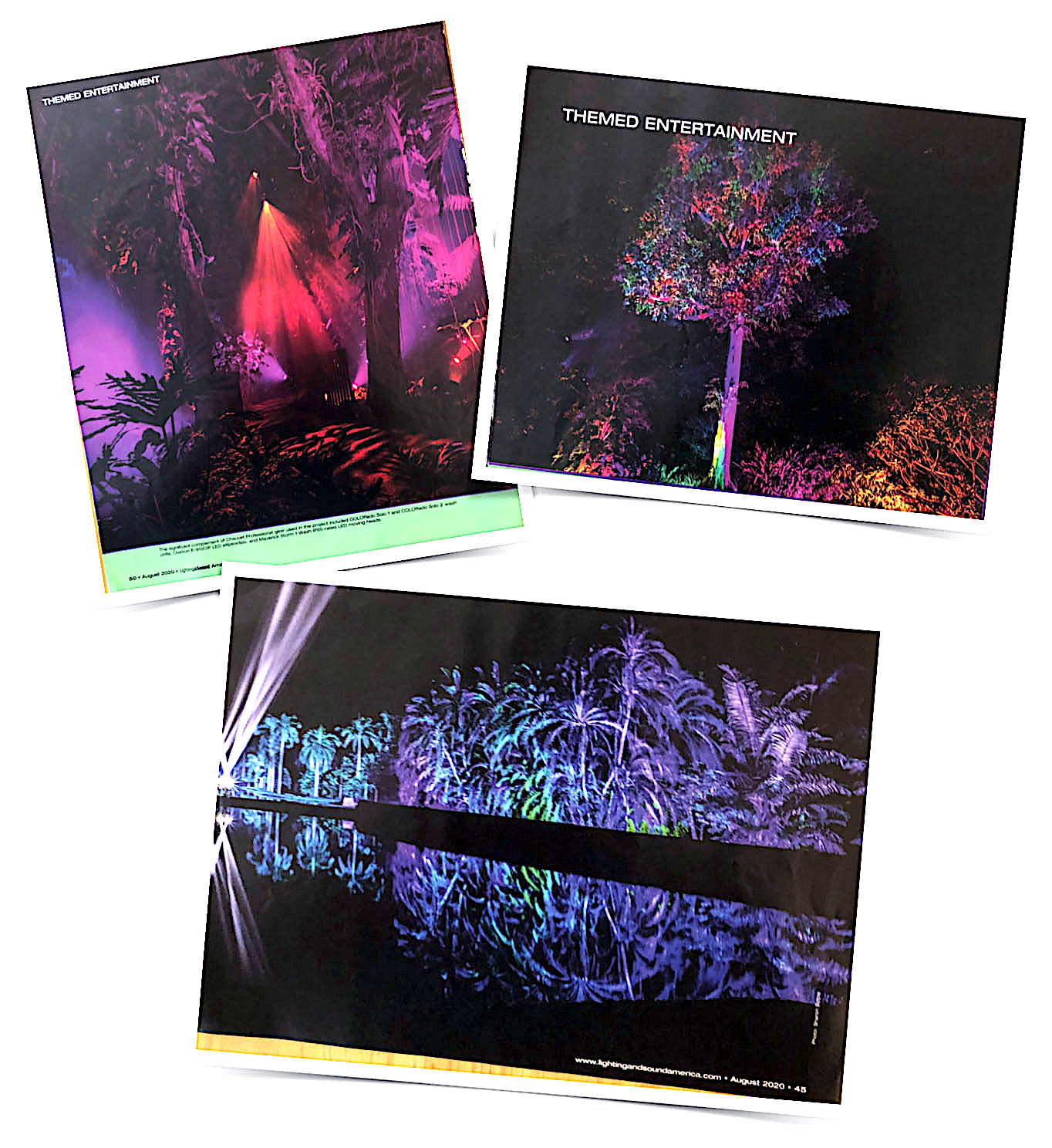
It quickly became clear that a more scenographic approach was the best choice for the design so I took on the role of scenic, lighting and media designer. We faced the traditional challenges of any production and several specific challenges brought about by the nature of this piece including but not limited to...
• Adhering to Covid-19 safety guidelines and protocols.
• Weather-including temperature, snow and rain.
• What equipment to use to achieve the goals of the design
- Ease of set up and strike (nightly)
- Protecting the equipment and operators from the elements.
• Need to install and strike major components nightly.
• Transportation and storage of equipment, costumes and props.
• Distance issues for operators and stage managers, wireless
microphones and other equipment.
I was immediately concerned with the technology and how I could achieve the intended goals of the design within our budget and not risk damage to our primary equipment inventory. The concern of having lighting, media and sound equipment in the elements was the driving force behind the choices we made. I wanted the flexibility of color changing LEDs but could not afford the IP65 rated instruments that are commonly used in these conditions. My Master Electrician (Brian Bjorklund) insured that cable runs for power and control were shielded from the elements as best possible including mounting portable dimmer packs in specially modified plastic bins and using large garbage cans to store cable runs after each performance while allowing for easy running of cables at the next performance. I chose to use outdoor Christmas lights to achieve some effects and those were installed at the start of the production and stayed in place through the run unlike the other instruments, speakers, projectors and control surfaces that were struck nightly. I chose LEDs that were inexpensive and disposable if needed. We settled on the Beetopper LPC007 available on Amazon. These were priced under $60/instrument (Link Here). We were extremely happy with the quality of the fixture and the color and dimming were more than acceptable for the needs of this production. They are a $60.00 instrument and you get what you pay for, but our expectations were met and we felt that if the fixture was destroyed it was an acceptable gamble. I had a few incandescent units (Altman 4.5x6.5) that we pulled from inventory that had been taken out of regular service a few years ago and decided if we lost them that was ok. These instruments were dimmed using 4-channel portable dimmer packs such as those made by Leviton and Chauvet. The Leviton dimmers were available on Amazon for less than $150.00 each. (Link Here)
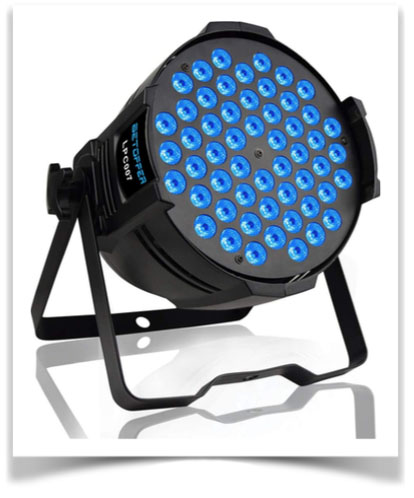
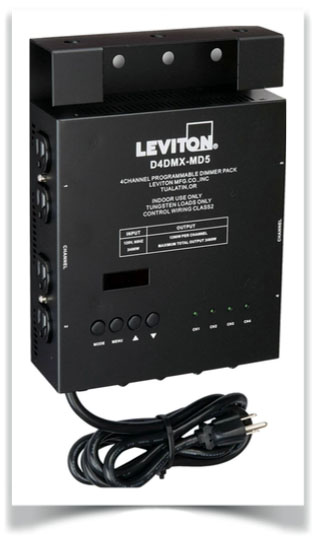
We decided to divide the natural lands area into four zones. This made the process of designing and installation easier.
Zone #1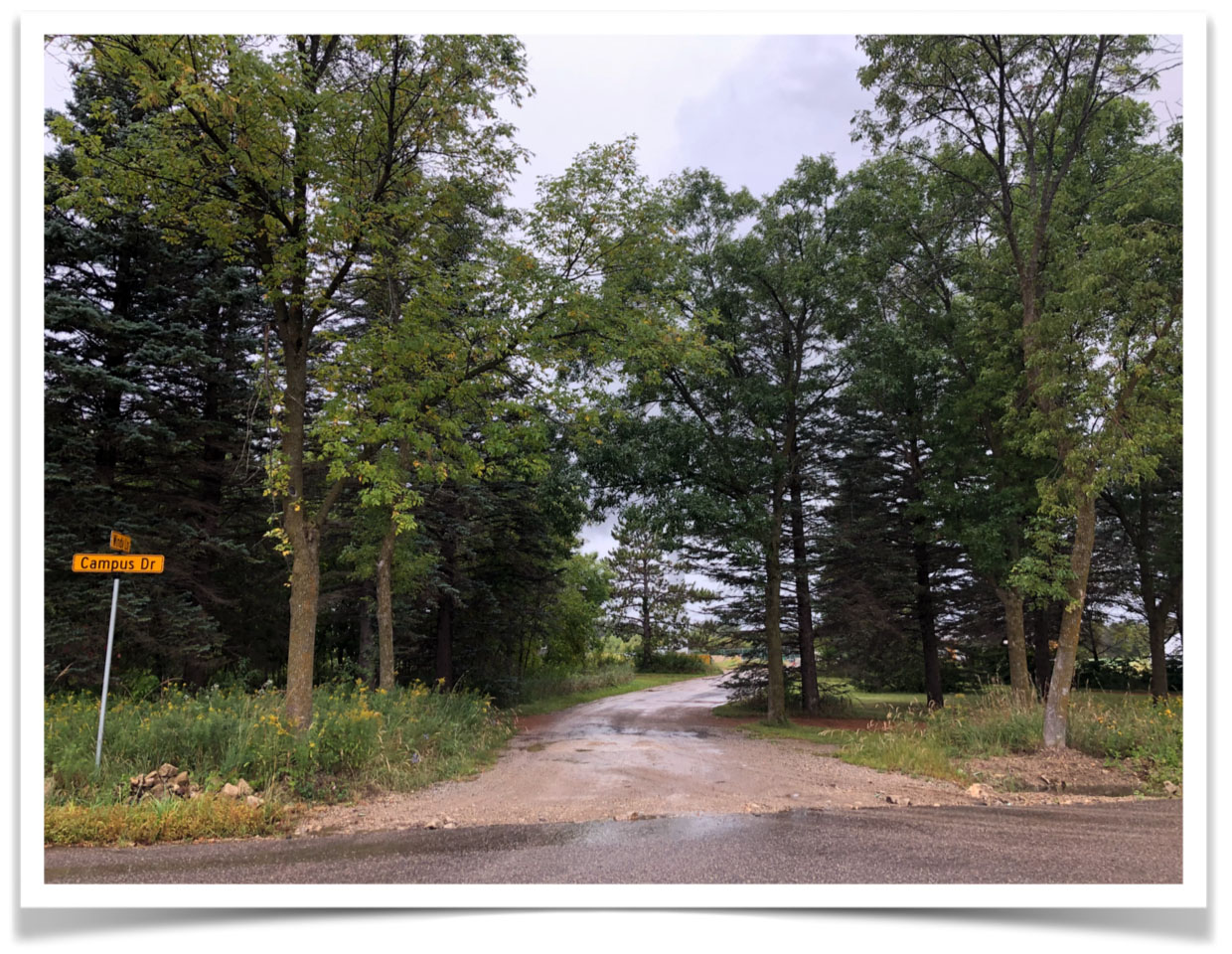
Zone #2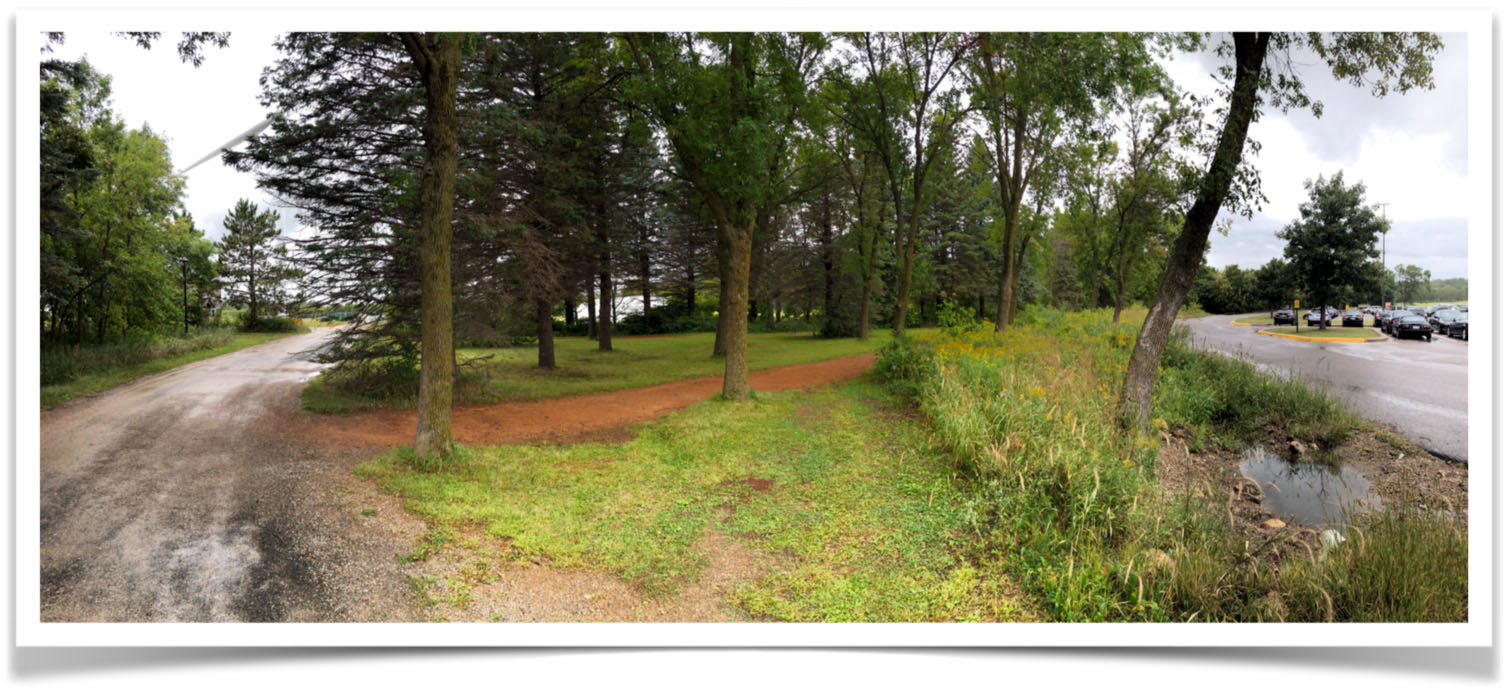
Zone #3A and 3B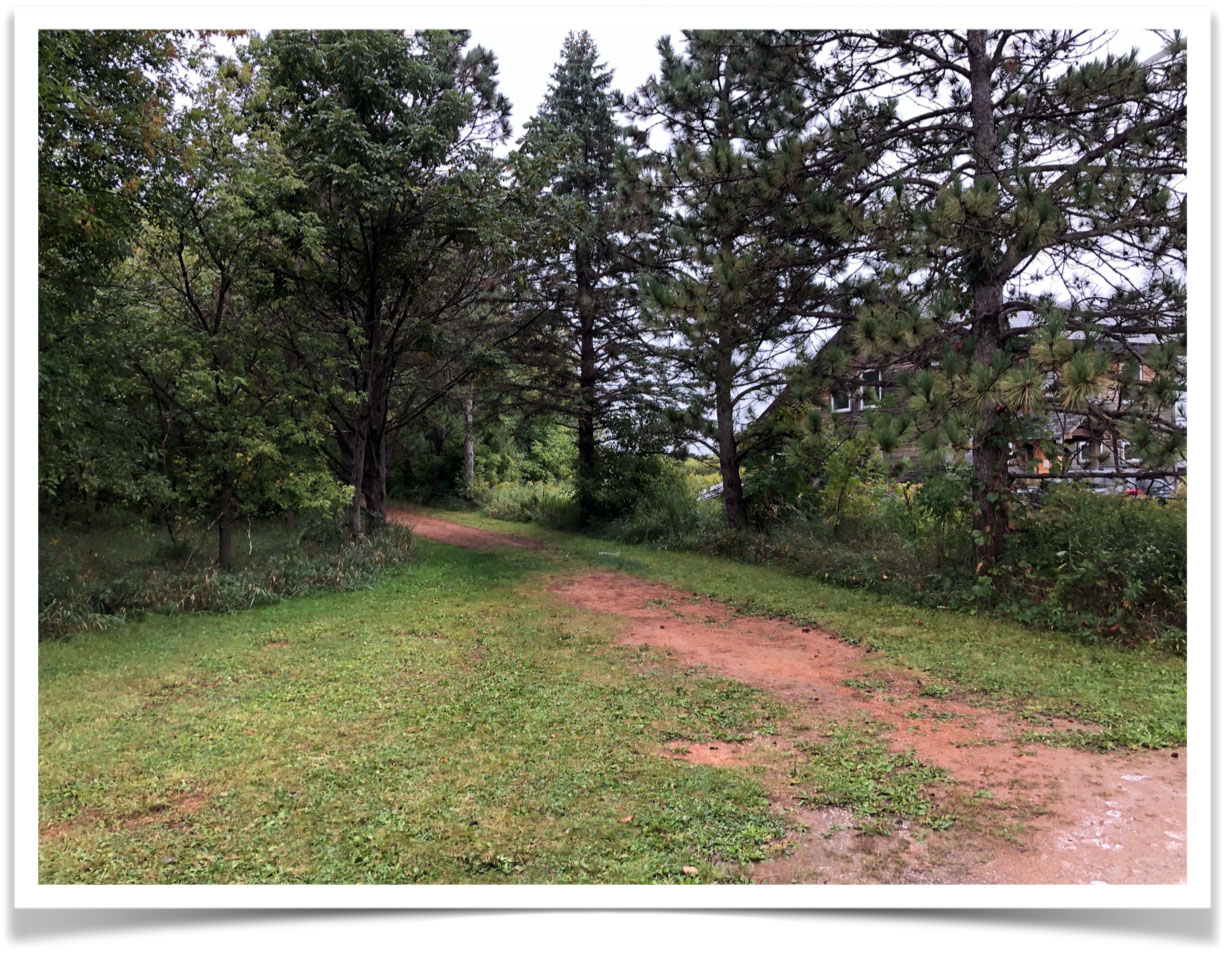
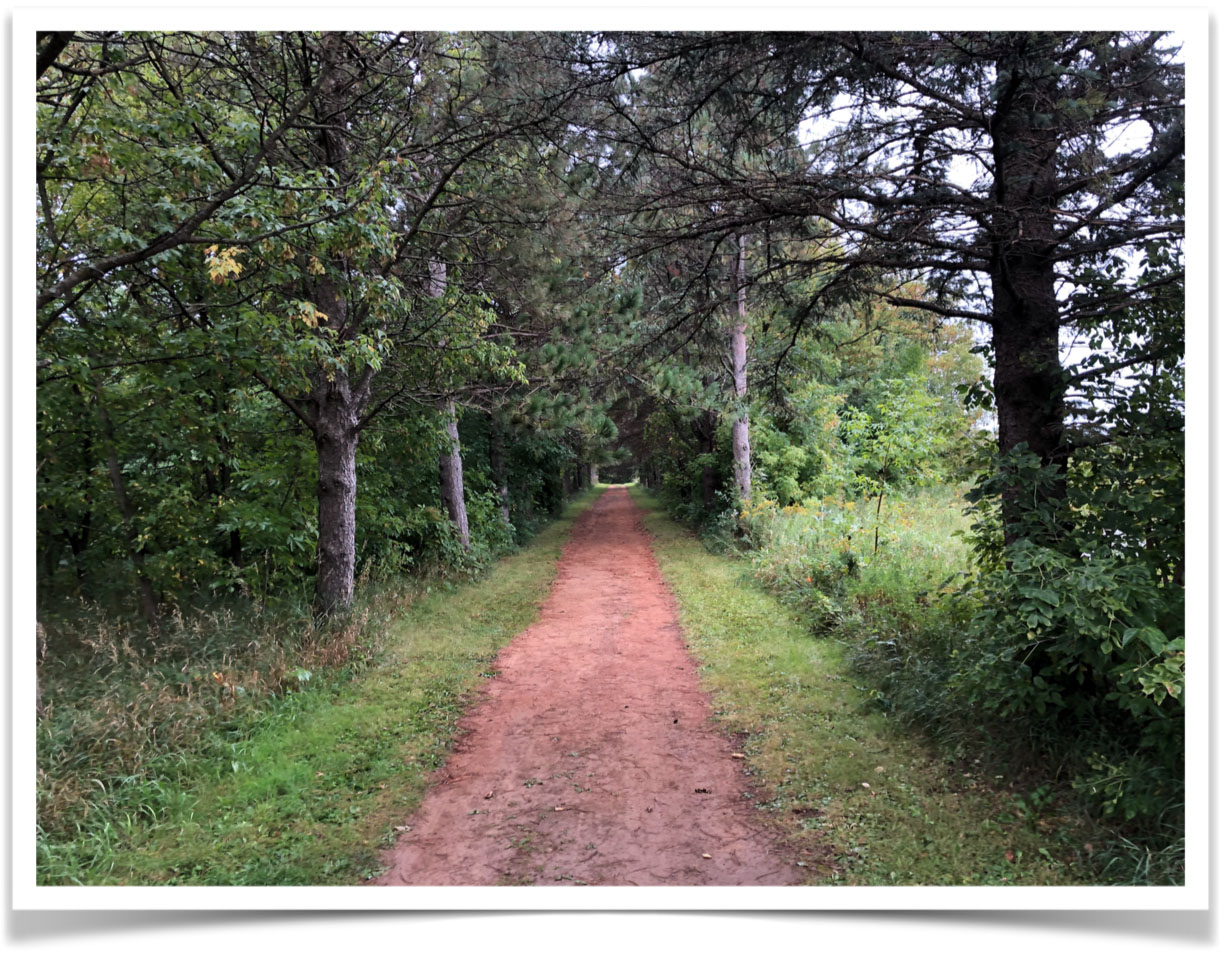
Zone #4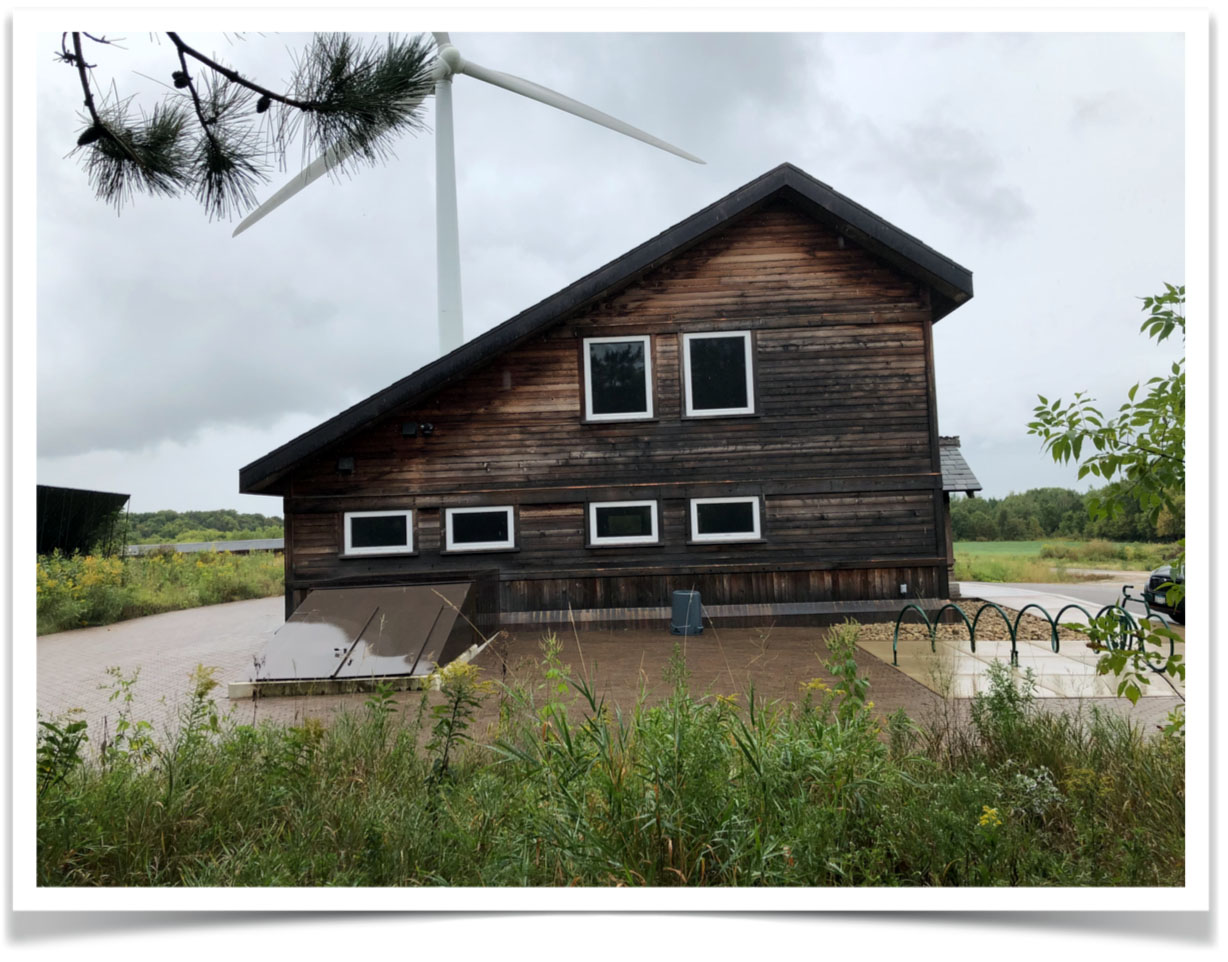
Some Concept Images
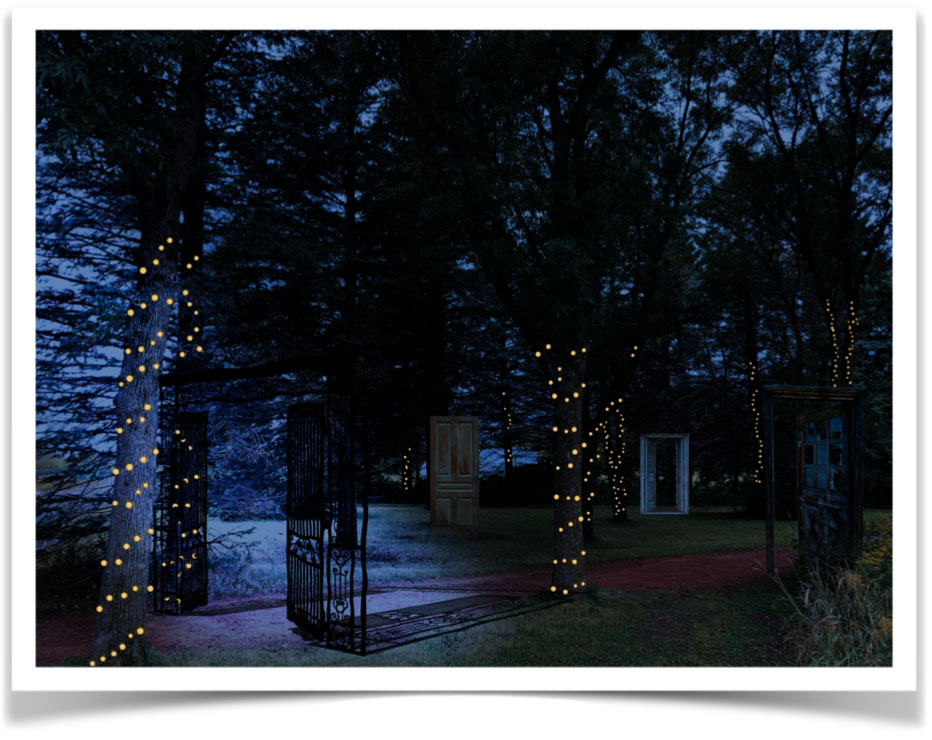
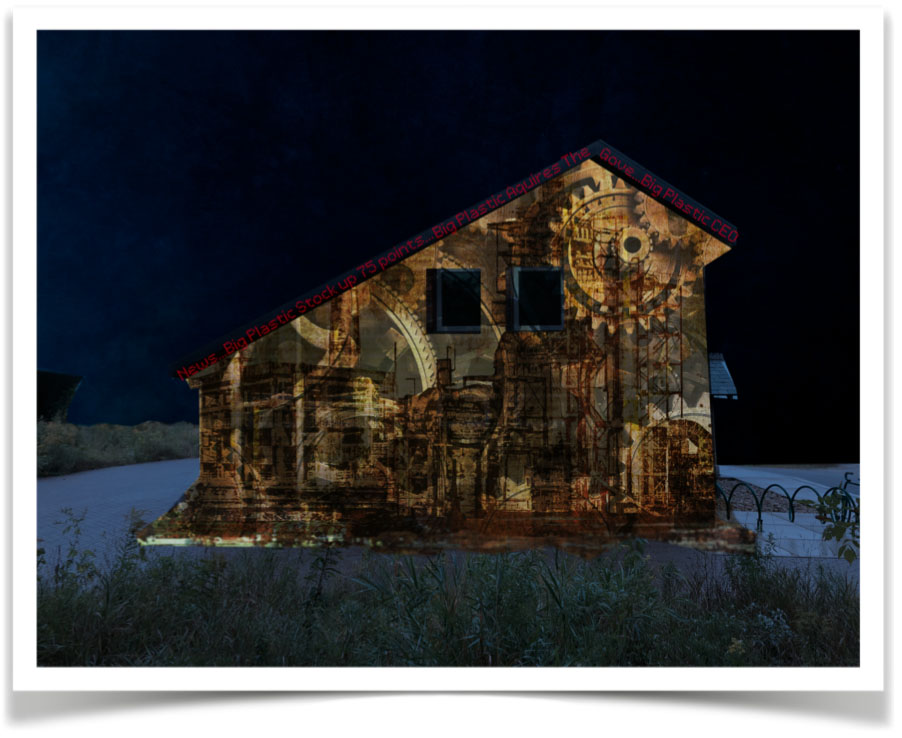
Part of the planning process included a full site plan for the natural lands that detailed the placement of scenic and technology elements. A PDF version of the Site Plan is located AT THIS LINK.
Setup Images
Tech Trailer (6'x10' enclosed utility trailer) We could close and lock each day.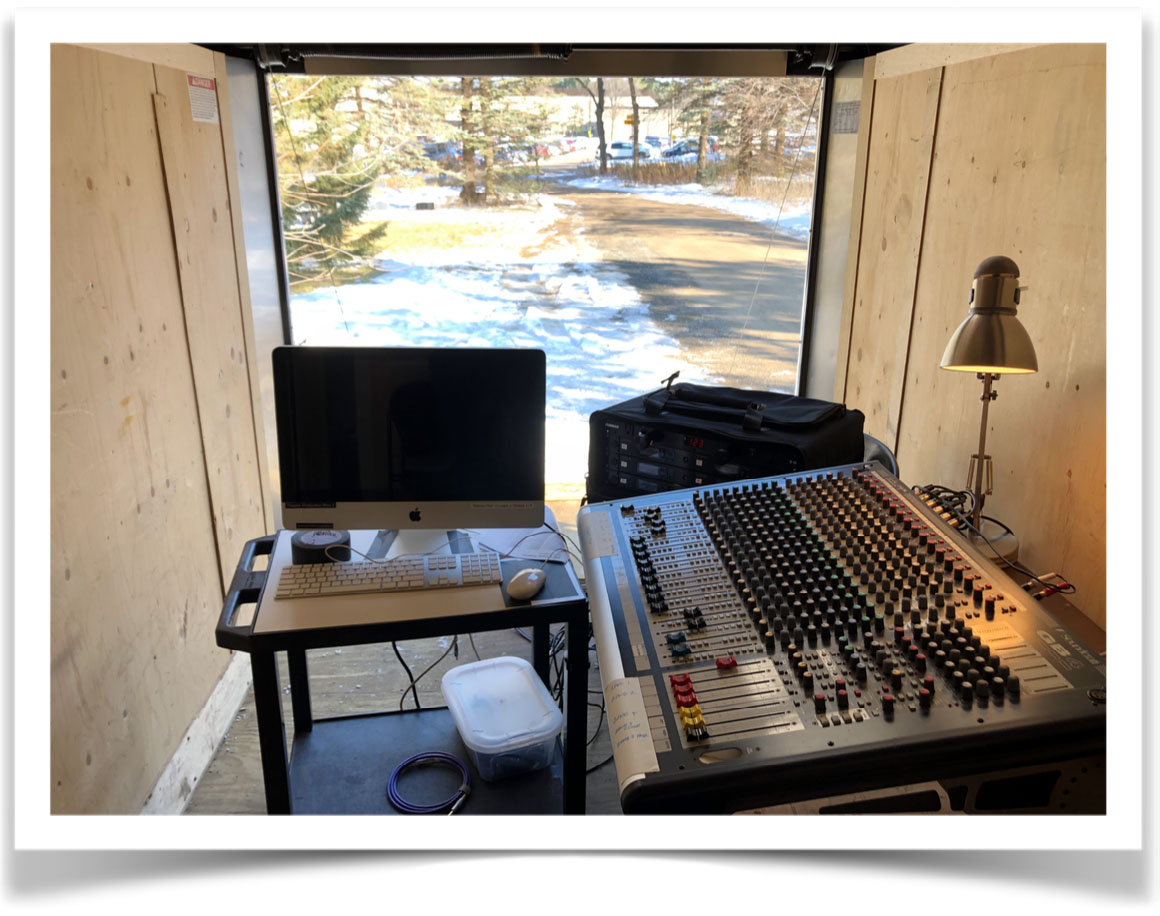
Tree Light LEDs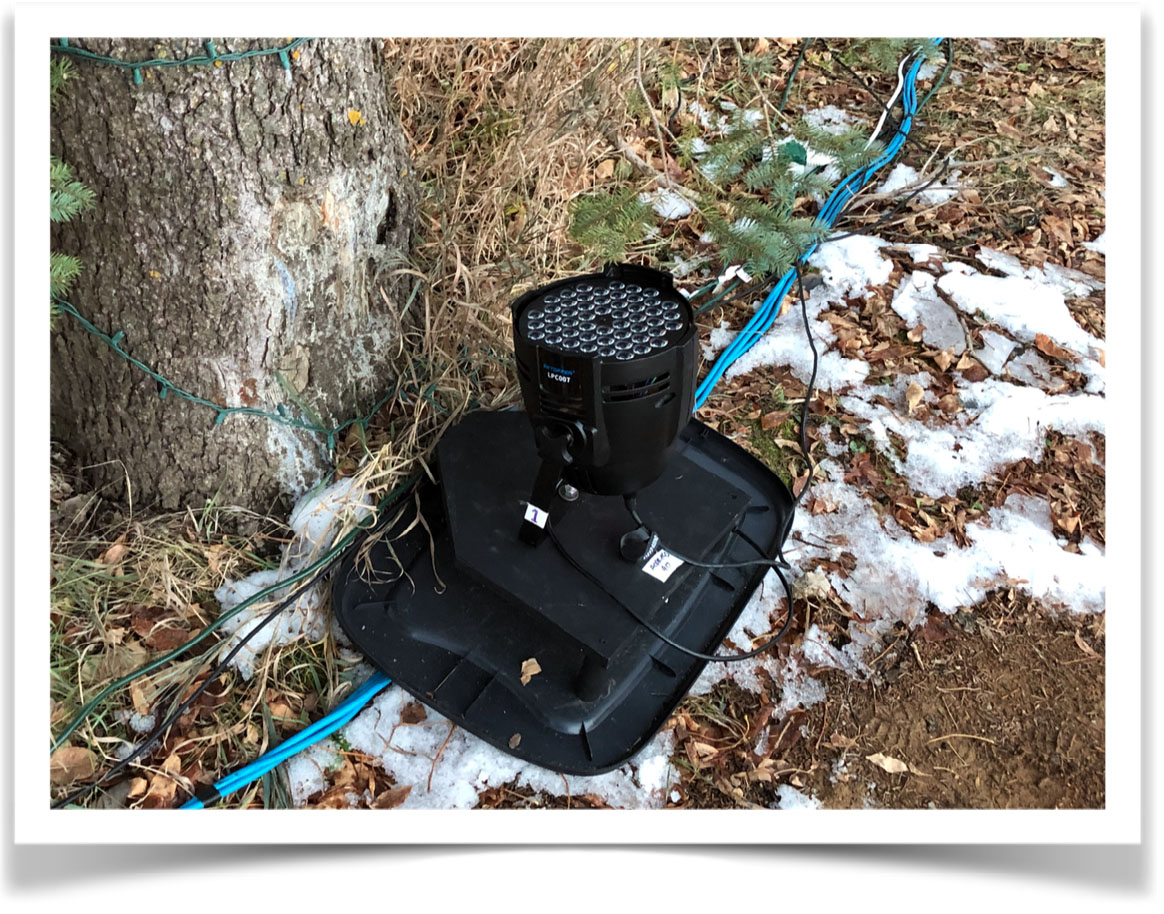
We used an ETC Nomad attached to an iMac for lighting control and another iMac running Qlab routed to powered speakers for audio playback. The mixing console was used to manage the audio cues from Qlab and the Shure wireless microphones worn by the actors to help amplify their voice to compensate for the environmental noise and the fact that they were wearing face masks.
Main Power Cabinet and yellow distro boxes which had six 20-amp GFCI outlets each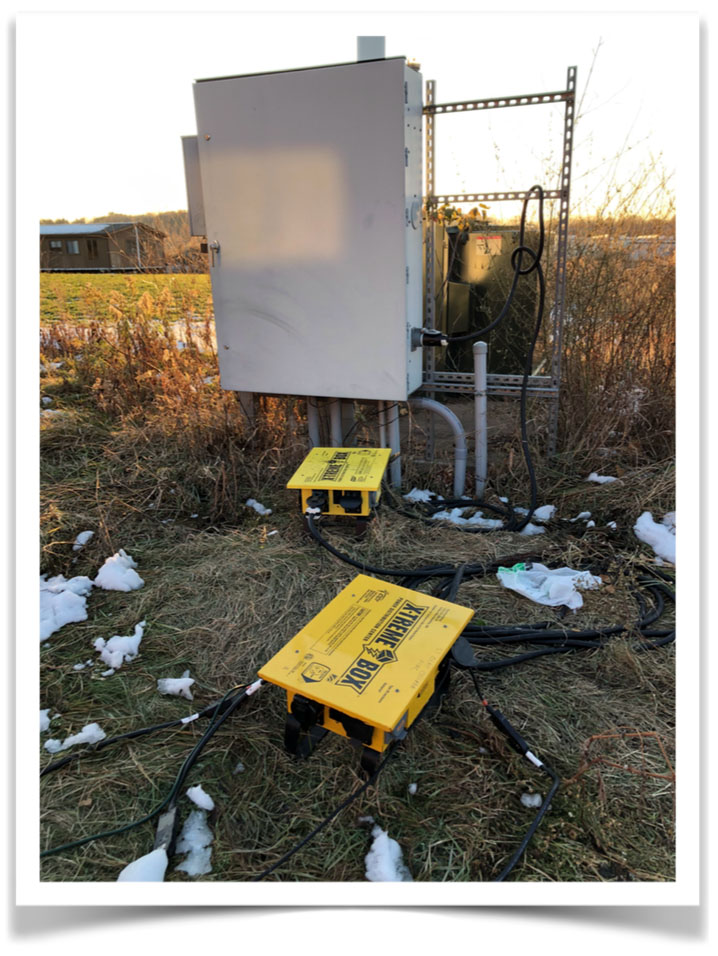
Light Tree (zone #4 back/side Light- typical)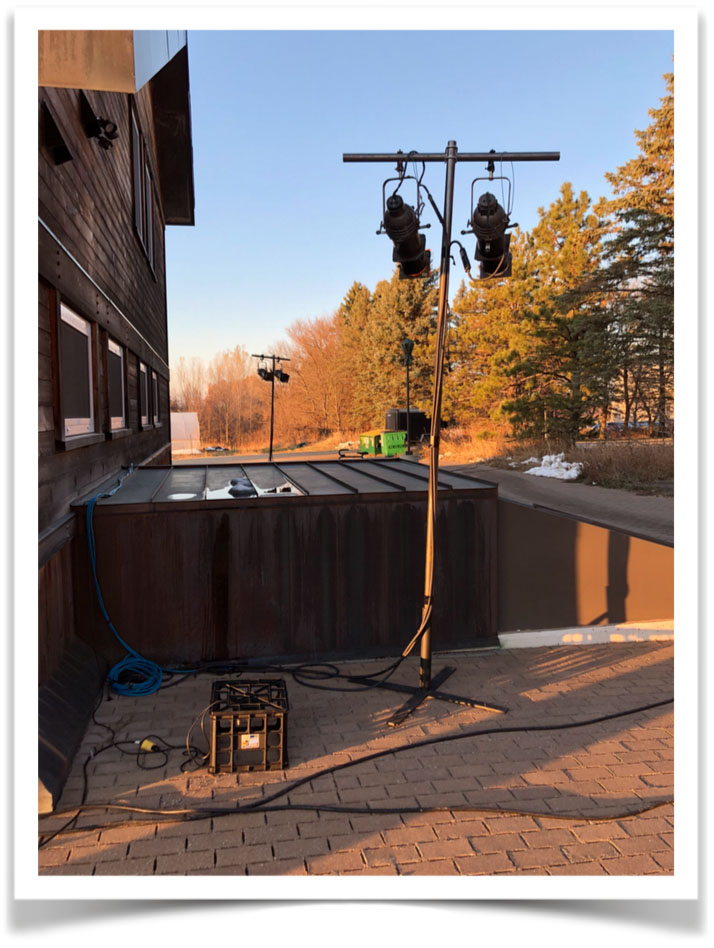
Dimmer Tubs & Cable runs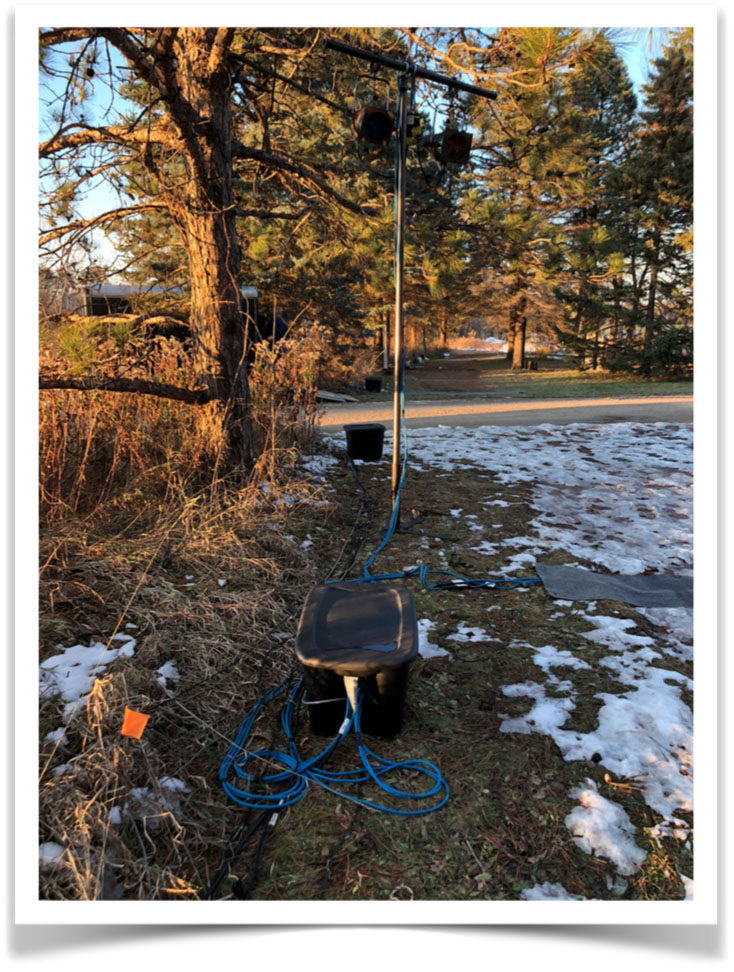
4-channel Portable Dimmer in storage tub (lid removed).
Eight of these were employed for the project.
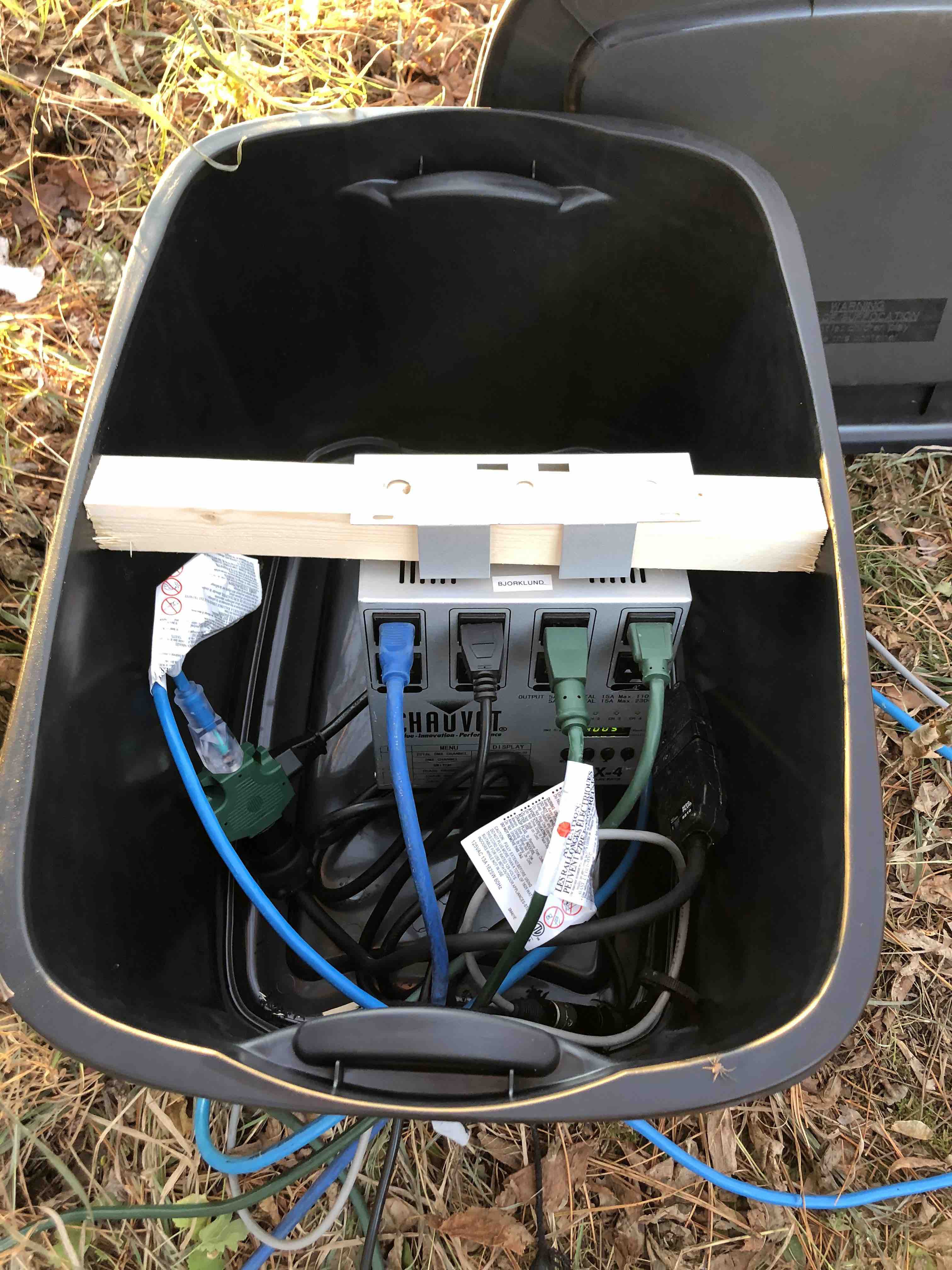
One of the greatest challenges and concerns was the equipment used for the projection mapping. Both Zone 2 and Zone 4 had media elements associated with them. Zone 2 was the Fairy Folk Grove where an “otherworld” rave would take place. Zone 4 was the worldwide headquarters of Big Plastic. The Art Barn in Zone 4 was projection mapped and required extra time nightly to insure that the projected media was correctly mapped to the architecture of the side of the building. In order to get the throw distance and brightness needed in these zones we had to use two of our primary projector units. These are 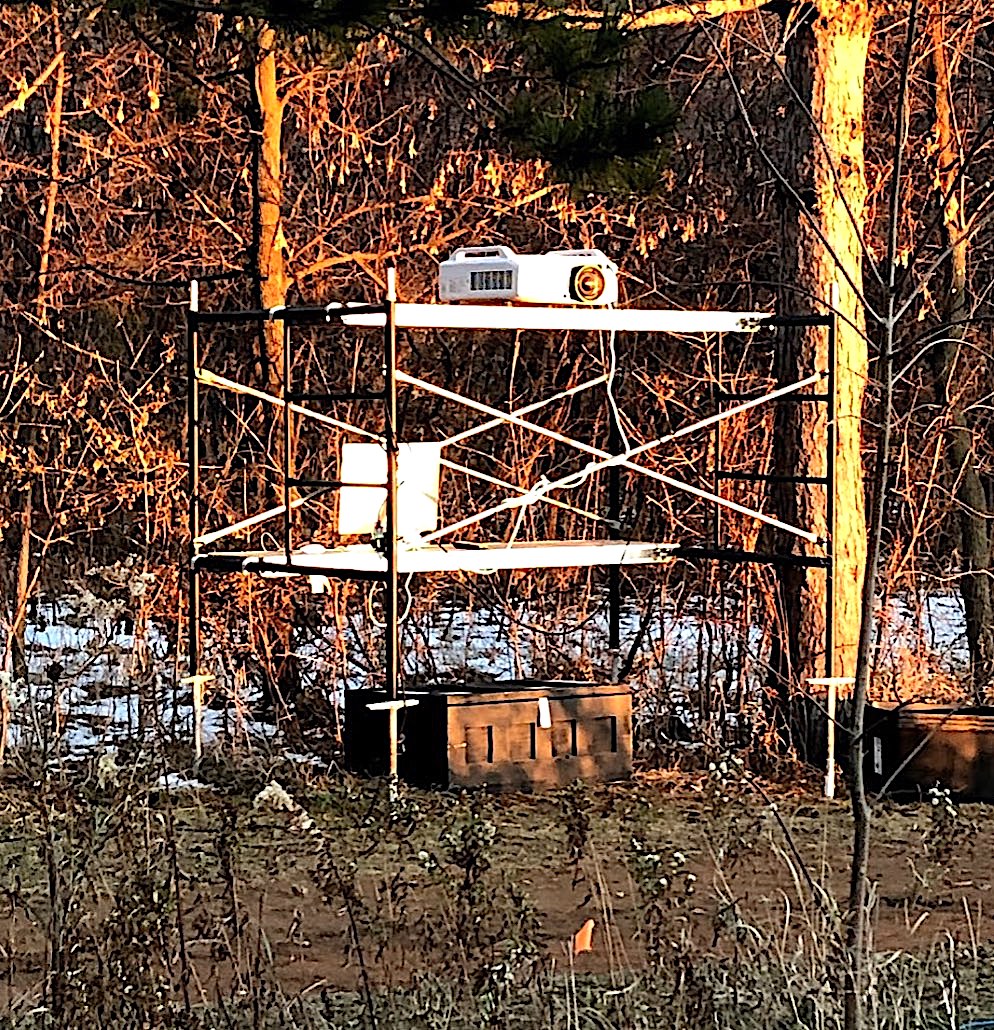 large format Epson Powerlight ProZ 9900WNL-N units with around 10K lumen output and short throw lens. Each unit has a current replacement cost of around $6000.00 per projector/lens combo and extreme care was exercised in the nightly install and strike of these units. Further care was taken to insure that there was no moisture build up within the units. Each of these projectors had a dedicated iMac computer running Qlab to execute the media content. We had problems on two evenings during the tech process where the temperature was so cold that the computers did not operate properly.
large format Epson Powerlight ProZ 9900WNL-N units with around 10K lumen output and short throw lens. Each unit has a current replacement cost of around $6000.00 per projector/lens combo and extreme care was exercised in the nightly install and strike of these units. Further care was taken to insure that there was no moisture build up within the units. Each of these projectors had a dedicated iMac computer running Qlab to execute the media content. We had problems on two evenings during the tech process where the temperature was so cold that the computers did not operate properly.
Other concerns included excessive wind on one evening’s performance that ultimately resulted in our having to cancel the performance. The wind was creating excessive noise in the wireless microphones and blew over one of our lighting trees in Zone 4 damaging the instruments and cracking a lens in one of the units. Furthermore, this would have been an uncomfortable experience for our performers, crew and audience. During the technical rehearsals we had to take numerous warming breaks due to the excessively cold temperature. Those breaks had to be staggered to insure that we did not exceed Covid-19 capacity in the Art Barn. The design process was hindered by the fact that the entire production was outdoors and lighting and media cues could not be written or notes taken care of during the day. This meant that extra time was needed in the evening rehearsals to take care of cue notes and other aspects of the lighting and media such as level setting etcetera.
Producing during a global pandemic has taught us many things. While live production is unique with the needs of each production, there are some norms that we have come to expect. Trying to hold to that traditional model during this time is not going to work. Producing during the time of Covid-19 is an exercise of patience, flexibility, and adaptability. It is also a time to manage your expectations. Be willing to embrace the things that each experience throws at you. While you strive for the best possible outcome, do not sweat the small stuff. Your production values may not be what you are used to, or the final experience may not be exactly as you had imagined it. There are always variables in live production and those of us in the industry have made it our life’s work to be able to adapt to and overcome those things. This will be even more true while we are producing for the foreseeable future. The positive side of this is that we are learning new and exciting ways to work and to engage our creativity and our audiences. We are storytellers that use every tool at our disposal to tell our stories. Covid-19 has presented us with some new tools for the toolbox. Use them and embrace them. I promise you that by making the effort to produce, you will be proud of what you accomplish. Furthermore, when we can adapt and produce face to face, no matter how different it may be, it is a powerful experience that brings actor, designer, director, and audience together in the moment creating the magic that is the live theater.
Please take a couple of minutes to watch the short documentary about the production (linked below). It was created by Marko Kojicki who was one of my students this past semester. It does an excellent job of pulling the concept together as well as showing some of the final product. https://tfedwards.wixsite.com/designbytoddfedwards
Stay safe, sane and creative. [ ]
Todd Edwards is an Assistant Professor, Designer and Technical Director in the Theater Department at St. Olaf College, Northfield, MN
Production photos:
Zone #1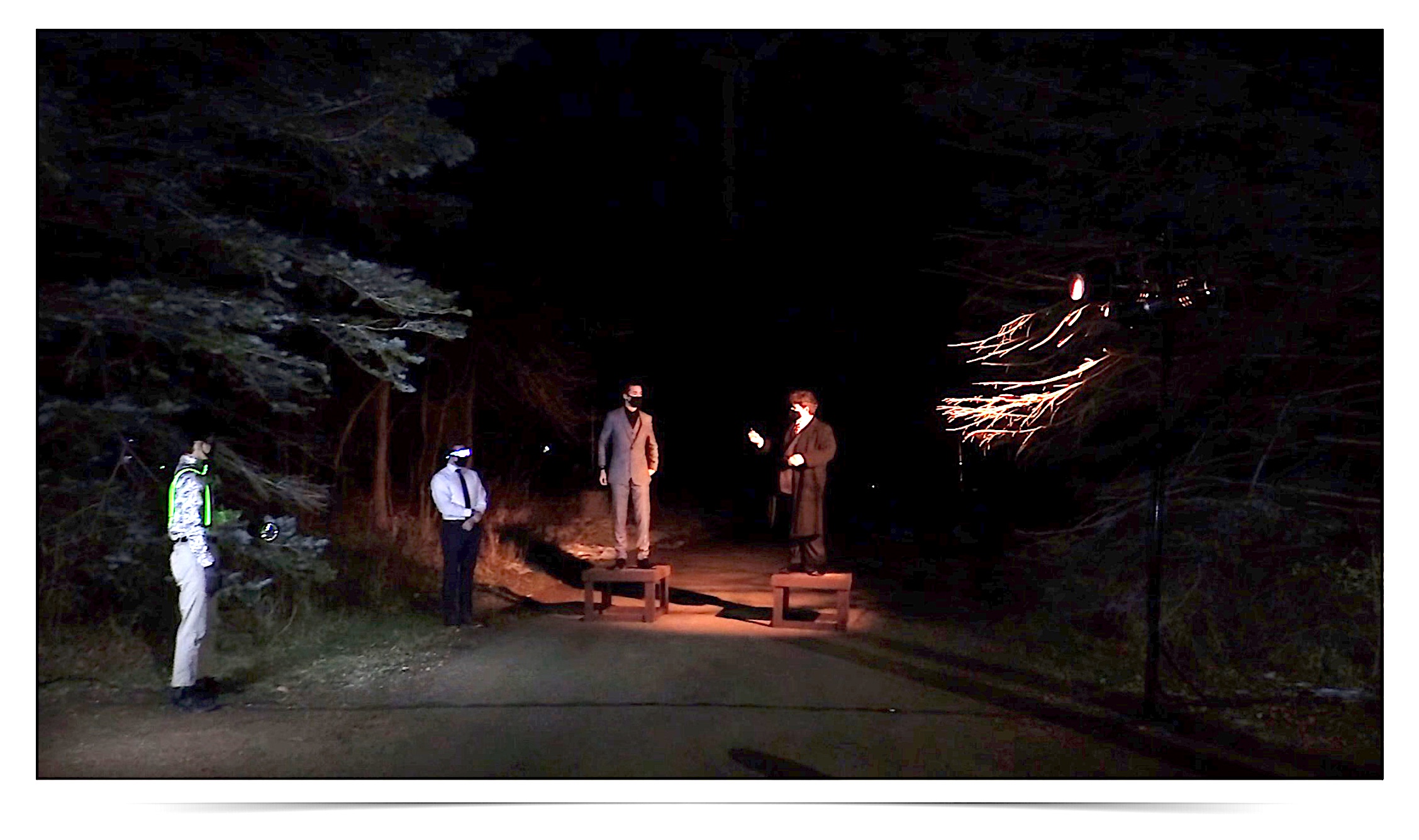
Zone #2 "The Rave"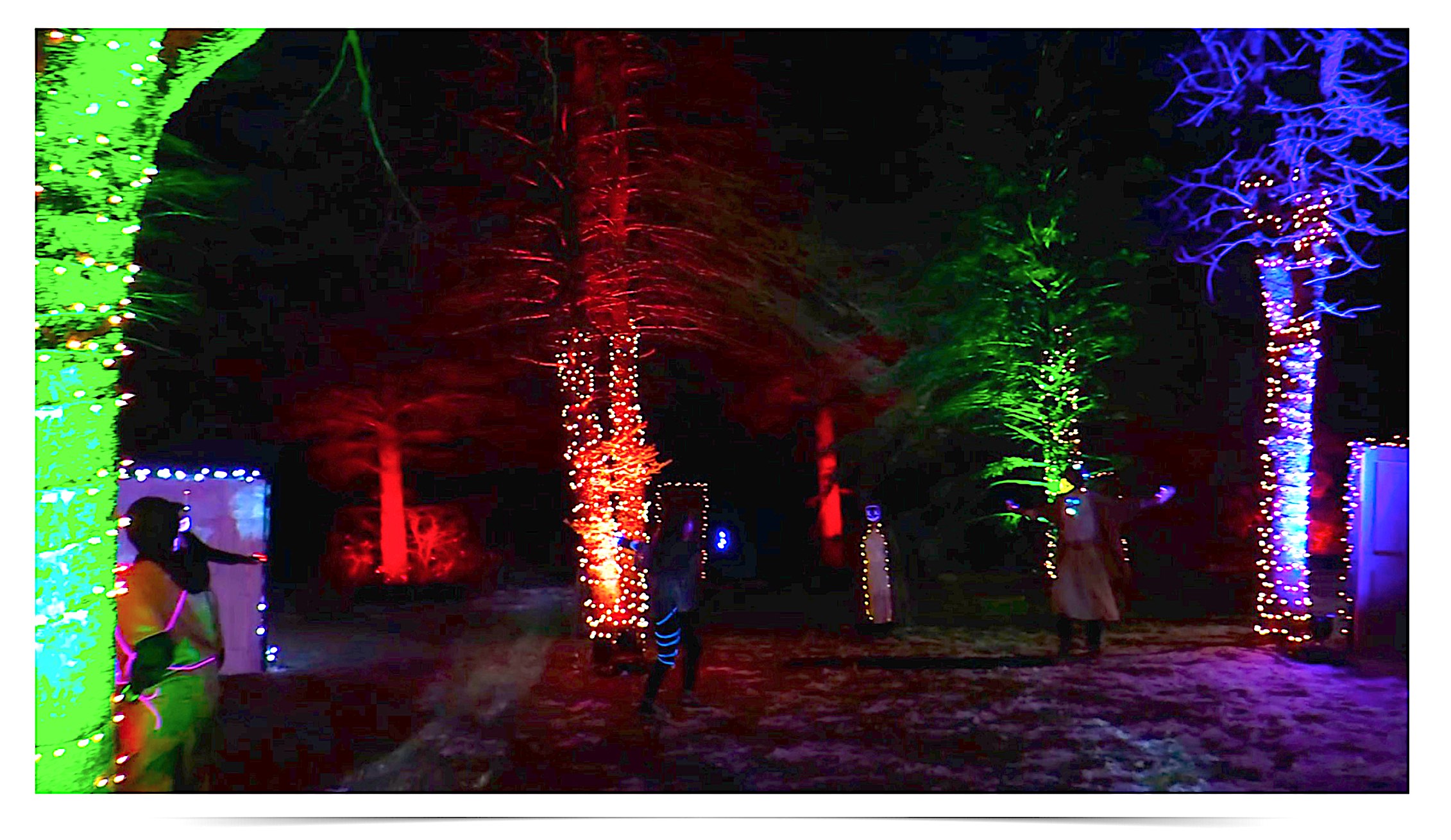
Zone #3 (start of scene)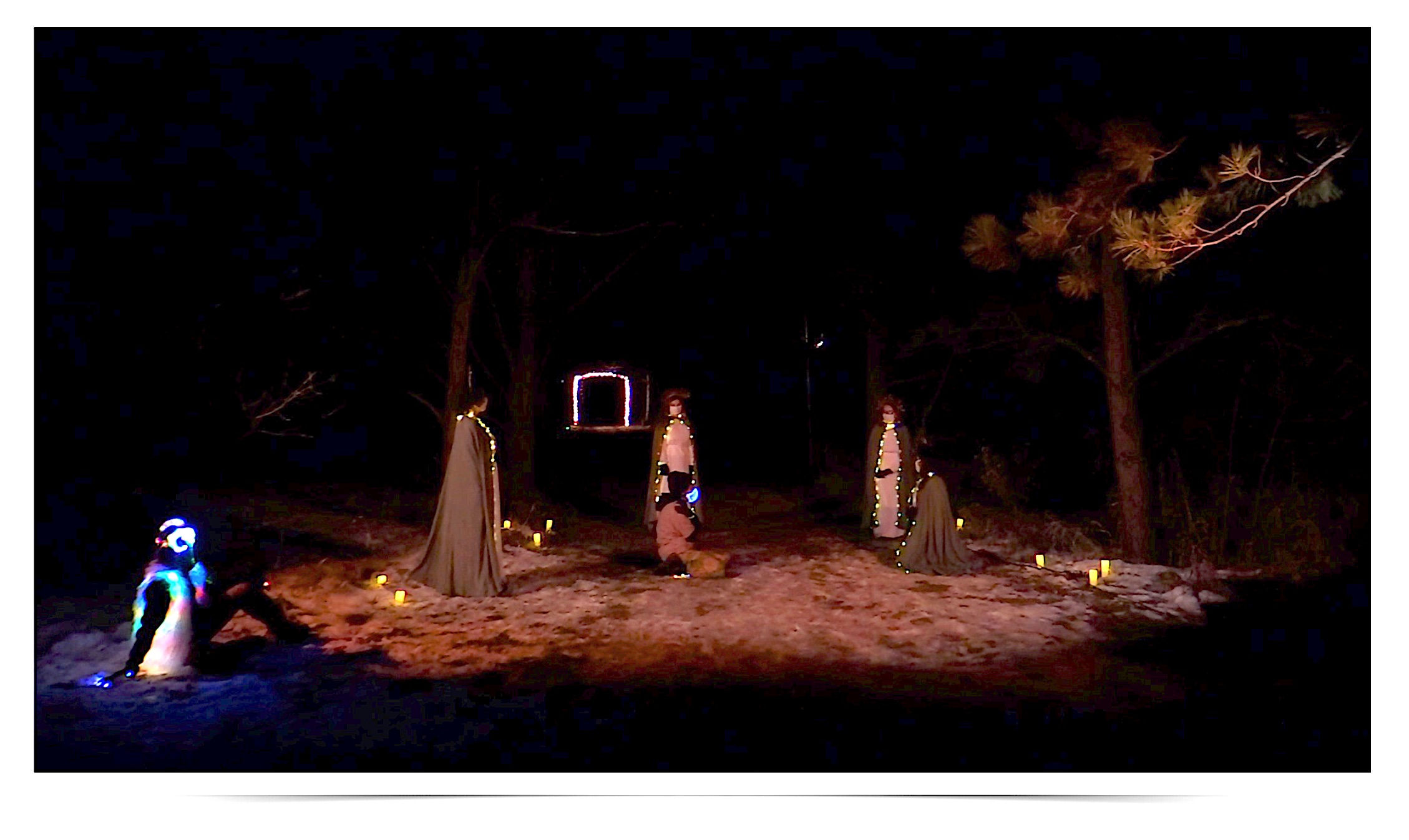
Zone #3 (end of scene)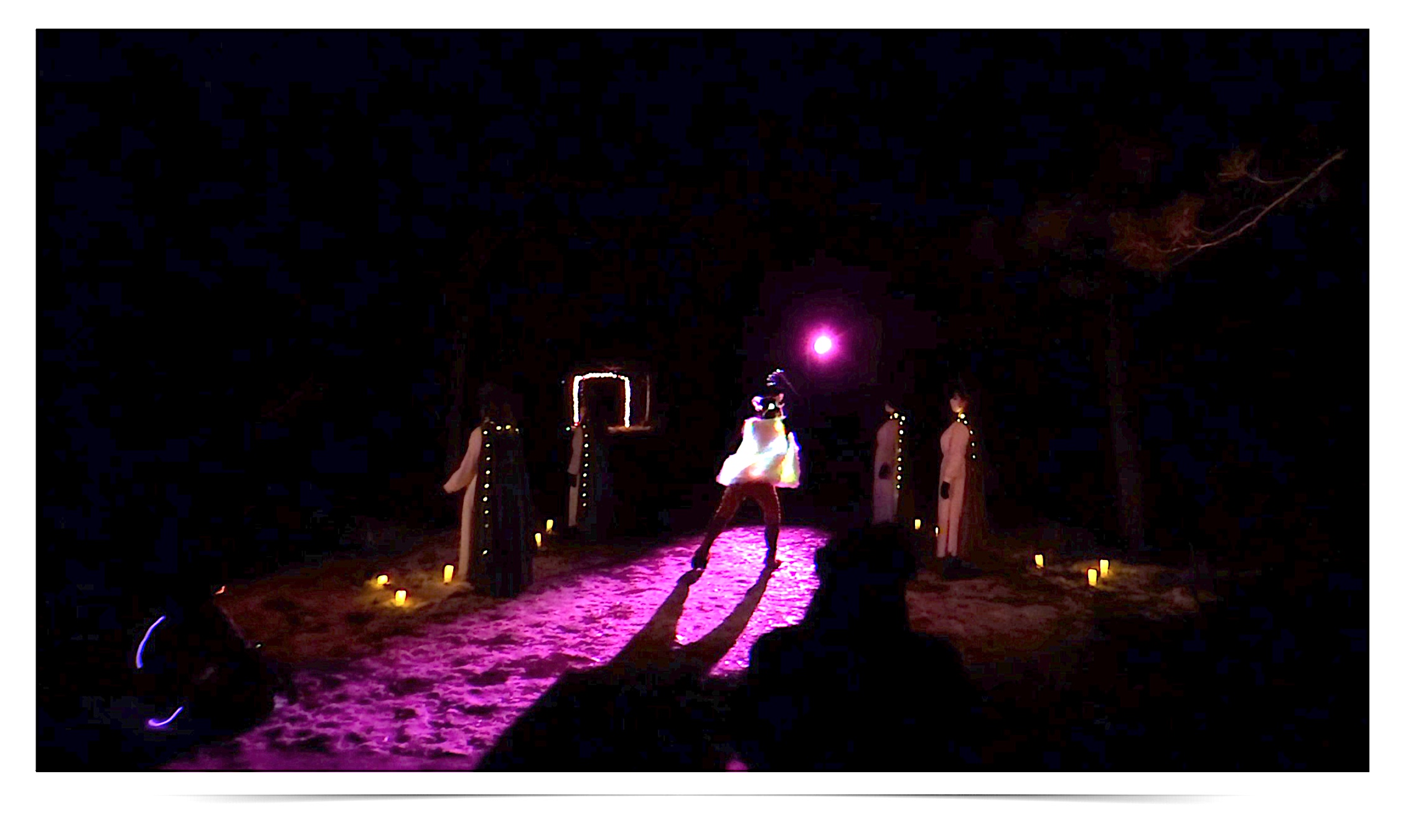 Zone #4 Big Plastic Headquarters
Zone #4 Big Plastic Headquarters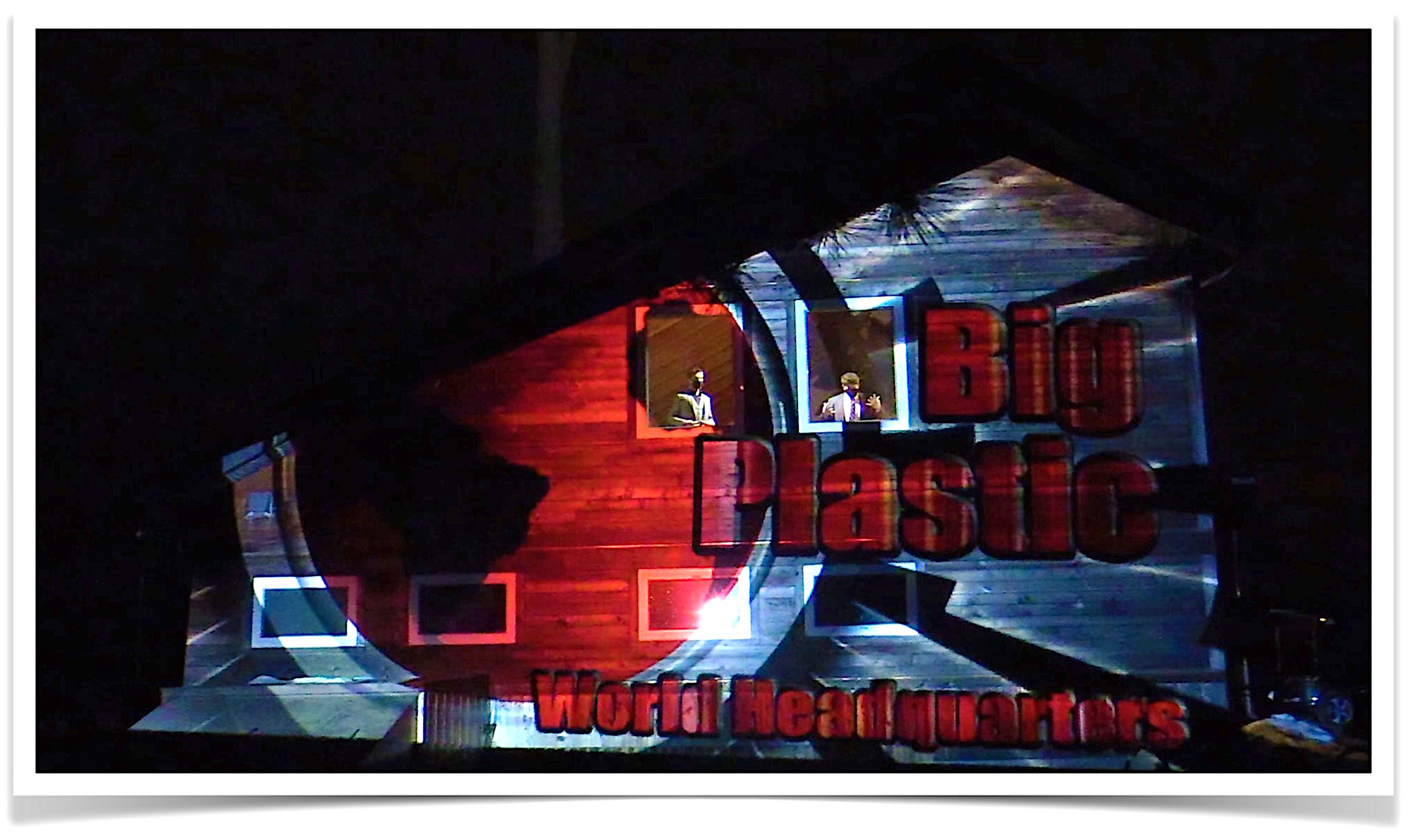
Zone #4